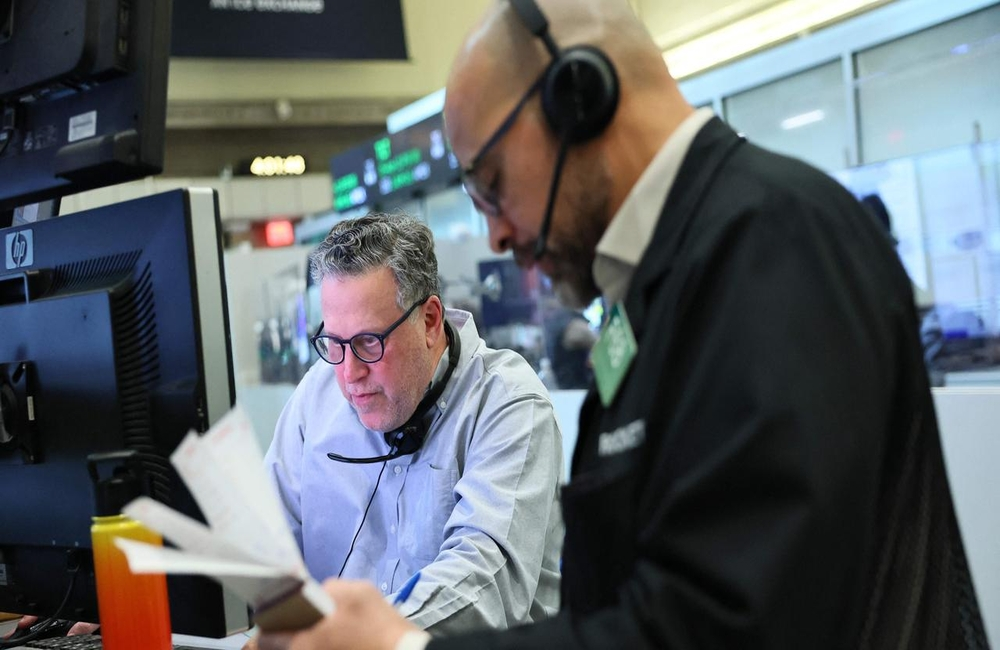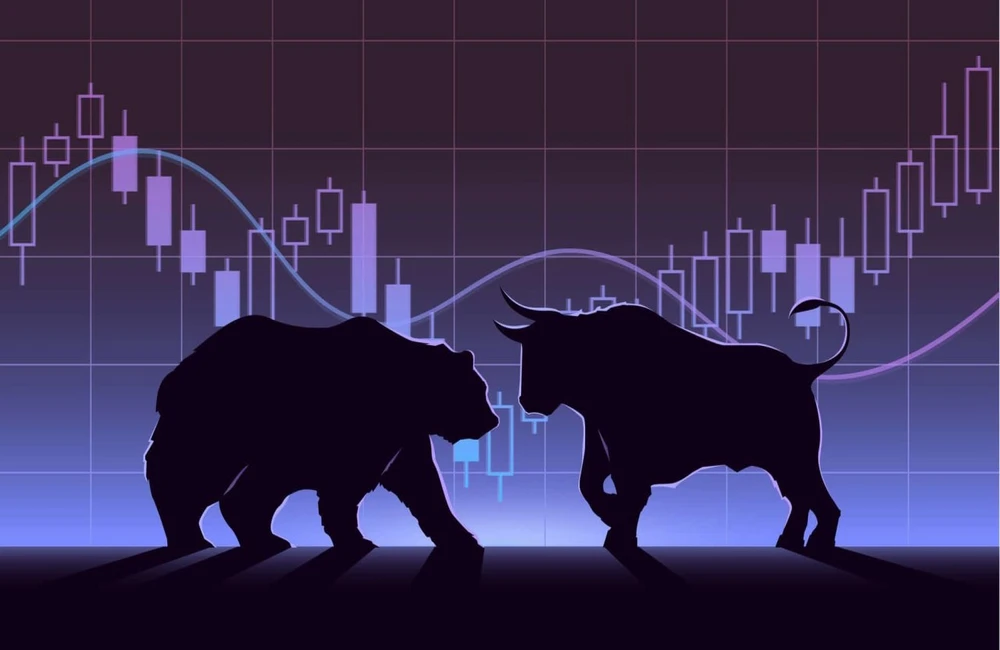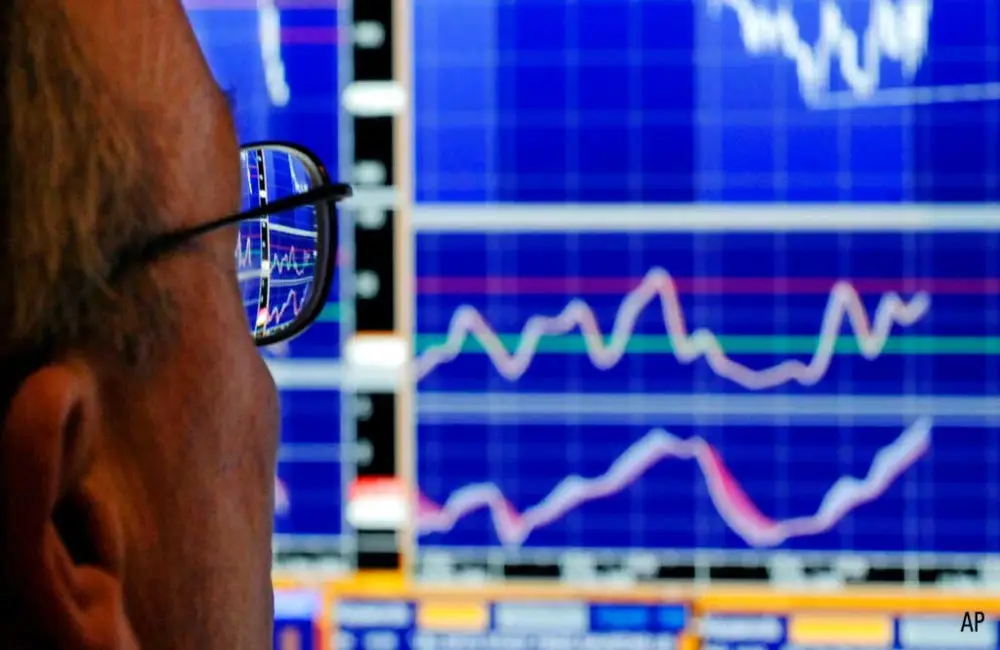ASX futures fell 25 points, or 0.3 per cent, to 7299 at 8. On Tuesday morning, pointing to a negative start for trading after the local bourse fell 1.2% in the previous session.
The Reserve Bank is widely tipped to raise interest rates for the first time since 2010 when it meets this afternoon. Its statement following a policy meeting is scheduled for 2.30pm.
The S&P 500 climbed 0.6 percent overseas in a late-afternoon rally that turned around a slide as deep as 1.7 percent, its lowest intraday level since May 2021. The Dow Jones industrial average rose 0.3%. A surge in technology behemoths Microsoft, Tesla and Alphabet propelled the Nasdaq Composite Index 1.6% higher, a day after it posted its worst monthly performance since the Global Financial Crisis.
The S&P 500 plunged 8.8 percent in April and the Dow industrials dropped nearly 5 percent, the worst monthly performance for the indexes since March 2020. The Nasdaq Composite fell more than 13% in the previous month.
With an issue this imminently serious, investors have begun pricing in that the US Federal Reserve will require a rate hike when it ends its two-day meeting with a statement on Wednesday (Thursday AEST), and most see a significant 0.5% hike, plus an adjourned timeline concerning the reduction of the amount of government bonds and other securities the central bank owns as it struggles to contain inflation.
“It’s a jittery and nervous market,” said Sebastien Galy, a macro strategist at Nordea Asset Management. “It has been continually fed liquidity for a long time, and this has been anticipated for stocks,” he said, a policy that is now shifting as central banks reign in their monetary policy.
The yield on the benchmark 10-year US Treasury note also briefly hit 3% on Monday, its first time at that level since late 2018.
Day in the local market:
S&P/ASX 200 finished down 1.2 per cent at 7347.0, led by a large sell-off of technology shares. All sectors closed the day in the red, with the tech sector taking the biggest hit, down 4.0%. Healthcare stocks were also down 1.5%.
The three largest tech firms by market capitalization WiseTech, Xero and Computershare fell between 2.1% and 7.3%.
Shares boosted for travel after Australia’s biggest airline, Qantas, said it would place an order for dozens of planes manufactured by European firm Airbus SE, including new planes that will enable the airline to fly non-stop between Australia and the U.S. and the U.K. Qantas climbed 2.9% while Flight Centre ended up 1.8%.
The biggest loser of the day was Imugene, which plunged 14% after it said it was terminating a supply agreement.
The big four banks were mixed, with NAB down 1.0 per cent, at $32.32, after the lender said it had entered into an enforceable undertaking with financial intelligence agency AUSTRAC to address concerns the bank was not complying with anti-money laundering/counter-terrorism financing laws.
NAB chief executive Ross McEwan said the bank accepted the reasons for AUSTRAC's investigation, as well as the fact that it "took NAB longer to fix them than it should have".
Aussie Broadband slumped 28.1 percent to a near nine-month low of $4 after a third-quarter trading update failed to excite investors.
Gold futures were down 2.5 per cent at $US1863 in commodities markets. 60 and barrel; 0.5% higher to $US107 per barrel. 64 a barrel, and iron ore markets were closed for Chinese Labor Day.
Under a burden of selling, bond markets sank lower. The yield on the Australian 2 Year government bond rose to 2.52% while the 10 Year was higher at 3.26% ahead of the Reserve Bank’s meeting today. US Treasury 2 Years yields climbed to 2.73%, and the 10 Year to 2.98% abroad.
The Aussie dollar was fetching 70.50 US cents at 7.00 am AEST, having dropped from the previous closing of 70.60. The Wall Street Journal Dollar Index, which measures the US dollar against 16 other currencies, ticked up to 95.89.
Asia
Share markets in Hong Kong and China were shut for the Labor Day holiday.
Japanese stocks finished down, pulled lower by declines in electronics stocks, as jitters over higher costs of borrowing and raw materials persisted. Advantest Corp. falls 4.8% and Fanuc Corp. declines 2.3%. The Nikkei Stock Average slips 0.1% to 26818.53 amid thin trading during the middle of Japan’s spring holiday season. Earnings are in focus.
Europe
European shares fell sharply, with the pan-European Stoxx Europe 600 index slumping 1.5% to 443.83 as market players braced for a probable US interest-rate hike on Wednesday.
A 50 basis-point hike is so widely expected that some market pricing implies a risk of the move being bigger, Deutsche Bank analysts wrote in a note.
The tech and industrial stocks were the biggest fallers as the eurozone confidence surveys were released on Monday and the final April manufacturing PMI survey confirmed fears of a weakening economy.
Vestas Wind Systems dropped almost 8% as it lowered full-year guidance following 1Q results. Germany’s DAX fell 1.1 percent and France’s CAC 40 dropped 1.7 percent.
Markets in the UK remained closed on a bank holiday.
North America
US stocks rebounded Monday after the S&P 500 notched a new intraday low for the year and the yield on the US 10-year Treasury note hit 3% for the first time in more than three years.
The S&P 500 rose 0.6%. The Dow Jones Industrial Average rose 0.3%. The Nasdaq Composite Index rose 1.6%.
The indexes had traded lower for much of the session but turned higher in the final hour of trading. The S&P 500 dipped to 4062.51, its lowest intraday level since May 2021. That was enough to encourage value buyers, according to Instinet executive director Frank Cappelleri.
"Buying weakness...has been one of the few long strategies that has actually worked so far in 2020,” he said.
The afternoon rally provided a welcome reprieve to equities investors in what has been a tough year. The S&P 500 dropped 8.8 percent in April and the Dow industrials fell almost 5 percent, the worst monthly return for the indexes since March 2020. The Nasdaq Composite lost more than 13% last month, its worst performance since October 2008. Interest rates are especially momentous to tech stocks.
Four months in, the stock market is heading toward its worst performance in decades. The S&P 500, which has fallen 13% so far this year, has also had its worst start to a year since 1939, according to Dow Jones Market Data.
“It’s a market that is jittery and nervous,” said Sebastien Galy, a macro strategist at Nordea Asset Management. “It’s been on a liquidity drip for a long time and that’s been gotten into stock expectations and that’s no longer the case as central banks are tightening,” he said.
Investors are looking to Wednesday’s Federal Reserve policy meeting for more clues on the outlook for monetary tightening, with markets expecting a half percentage point rate hike to cool inflation that has jump-started the highest inflation in decades. Russia’s war in Ukraine and a Covid-19 outbreak in China could further snarl supply chains and push up prices.
Changing Fed policy is shaping the market math for investors, Merk Investments analyst Nick Reece said. Rising yields and falling bond prices have put them in investors' eyes in terms of a return on investment on a more competitive footing with equities for the first time in ages, he added.
“It’s alleviating some of the ‘TINA’ effect that’s been the backbone of the bull market since 2009,” Mr. Reece said. “TINA,” or “there is no alternative,” an argument that in a world of low rates, investors could do no better than stocks.
The yield on the 10-year Treasury briefly crossed 3% Monday, its first touch of that mark since late 2018. It closed at 2.995%, compared with 2.885% on Friday. The U.S. dollar maintained its recent strength, with the WSJ Dollar Index climbing 0.4% after posting its largest monthly gain in a decade in April.
Individual stocks were moving: Spirit Airlines' stock fell $2.21, or 9.4 percent, to $21.40 after the airline rejected an acquisition offer from JetBlue Airways, choosing instead to go ahead with a previously announced merger plan with Frontier Group. JetBlue shares climbed 29 cents, or 2.6 percent, to $11.30; Frontier fell 40 cents, or 3.8 percent, to $10.21.
Moody’s shares dropped $15.35, or 4.9 percent, to $301.13 after the credit rating company announced that its profit declined by about a third as costs increased.
Earnings season rolls on this week. Expedia and Clorox were set to release results on Monday after markets closed, followed by Pfizer, KKR, Airbnb, Starbucks and Lyft on Tuesday.
So far, earnings season has been fairly strong: More than 80% of companies that have reported so far have exceeded analysts’ expectations, according to Refinitiv. Stocks dipped last month even with the strong reports, as nerves about the months ahead took hold, investors said.
Oil fell early but caught and passed its own losses, with US crude up 0.5% at $105.17 a barrel. (EU officials have been working on a proposal to punish Russian energy.) Analysts at Nordic bank SEB say some observers doubt it will pass because it needs to be backed unanimously by EU members, most of which need Russian energy.
Traders are also watching for reports on Chinese lockdowns and looking ahead to a meeting of the OPEC+ alliance later this week, at which its members are expected to discuss its supply agreement.
























